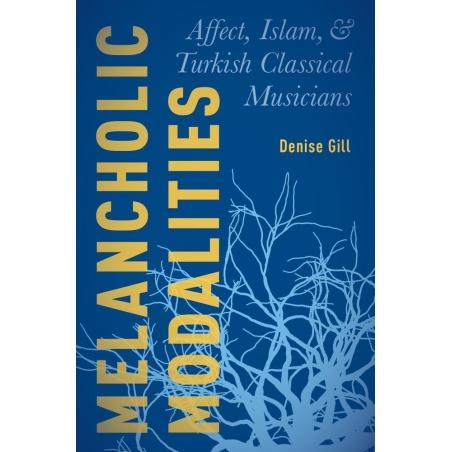Denise Gill analyzes how the melancholies intentionally cultivated by Turkish classical musicians, typically dismissed as the remnants of Ottoman nostalgia, emerge as reparative, pleasurable, and spiritually redeeming. Melancholic Modalities intervenes in debates about music and affect, and offers new, innovative methodologies of rhizomatic analysis and bi-aurality for researchers.
CONTENTS
Table of Contents
List of Figures
List of Examples
Acknowledgements
Conventions
Preface
Introduction
Melancholic Modalities
Rhizome One: Turkish Classical Music
Rhizome Two: Repertoires of Melancholies
Rhizome Three: The Practice of Affect
Rhizome Four: The Islamic Roots of Musicians' Melancholic Routes
Following the Rhizomes of Melancholic Modalities
Chapter One - The Melancholic State of Turkish Classical Music
Reforms as Roots
Cultural Policies and the Politics of Naming
Ottoman Music and the Turkish Nation-State
Shaping Ears and Hearts: Emergent Media Practices
Institutional Changes for Practices of Musical Transmission
Neoliberalism, Islamic Movements, and the Privileges of Privatization
Death of a Genre
Chapter Two - Separation, the Sound of the Rhizomatic Ney, and Sacred Embodiment
Sufism as Separation
Hu as Sound
Hu as Instrument Technique
Hu as Sacred Embodiment
Hu as Istanbul
From Life to Death and Sound to Silence
Chapter Three - Melancholic Genealogies: Rhizomatic Listening and Bi-Aurality in Practice
Learning Melancholy, Learning Love
Understanding Mesk
Learning from a Master
Learning with Notation
Becoming Your Lineage
Bi-Aurality and the Problem of Assumed Listening Geographies
Genealogy, Orientalism, and Orientations
Listening Like a Ney
Case Studies: Listening Rhizomatically to Me?k Lineages
Learning Music as the Practice of Melancholy
Chapter Four -- Boundaries of Embodiment in Sounded Melancholy
Rendering Melancholy Musical
Embodying Gender, Melancholy, and the Boundaries Between
The Body's Boundary: Melancholic Musicking and Tears
Sema and Sama'
Conclusion: Living with the Boundary
Chapter Five -- Melancholic Musicking, Healing, and Reparation
Melancholy as Illness
Musical Modes as Music Therapy
Melancholy and Health between East and West
Iconic Melancholic Musicians: Neyzen Tevfik
Melancholic Musicking: There is No Medicine
Musicking as Food for the (Melancholic) Soul
Suffering as Remedy: What to Take Away from Melancholic Musicking
Conclusion -- Affect in Ethnomusicology and Beyond
Bringing the Rhizomes of Turkish Classical Musicians to Bear beyond the Academy
Bibliography
Discography




